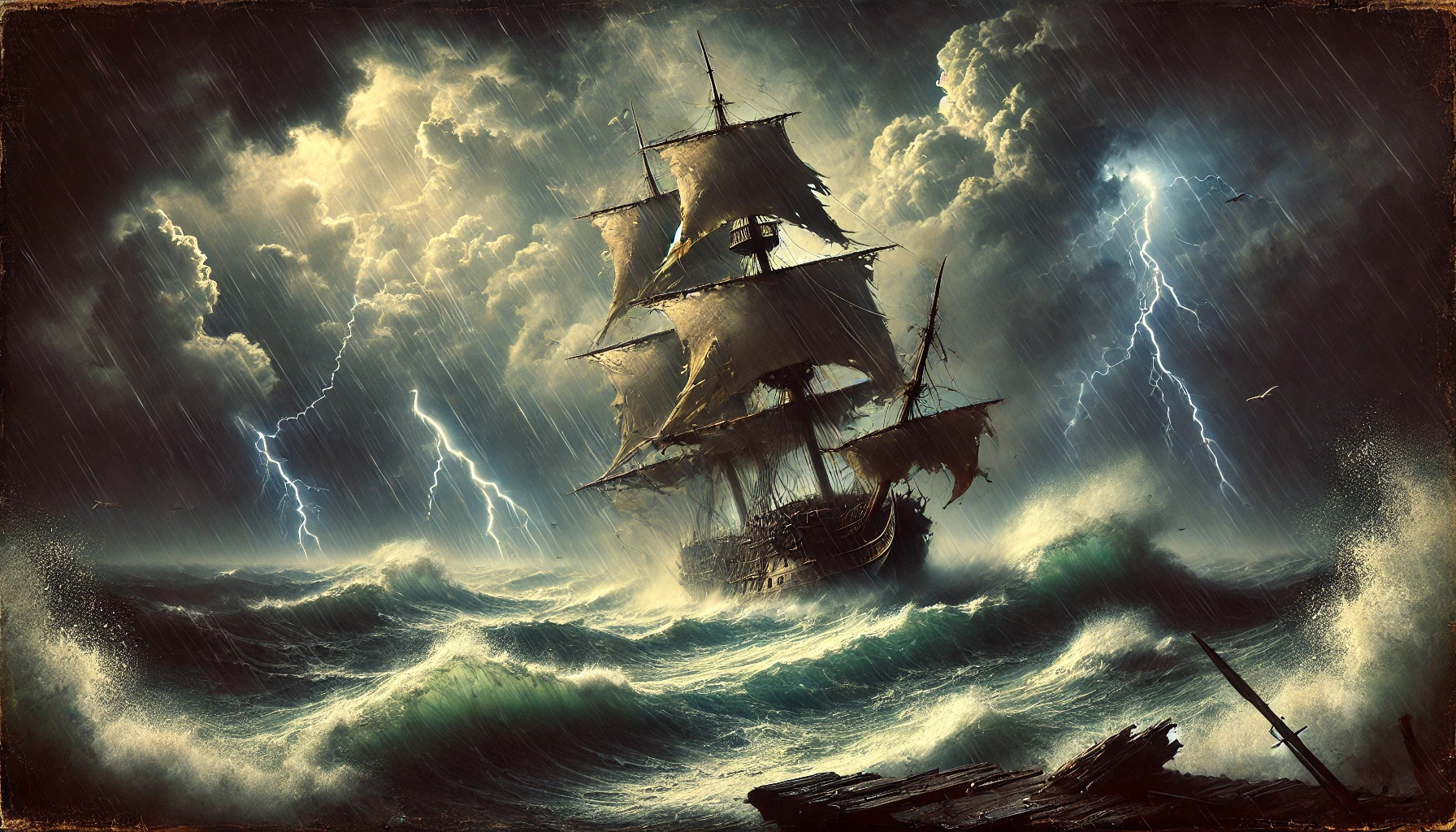Imagine a dark and stormy night, with the sea in turmoil and the wind howling like a ghost. In the distance, a ship appears on the horizon, its sails full despite the storm, illuminated by an eerie light. It is the Flying Dutchman, the ghost ship that wanders the seas without ever finding peace. Let's delve into the past together to uncover the secrets behind this haunting legend, digging deep to find the truth hidden within the myth.
The Legend of the Flying Dutchman
According to tradition, the Flying Dutchman is a ship condemned to sail the seas for eternity, never able to dock. Its appearance is often considered a harbinger of doom. Sailors tell of seeing its vessel in the distance, illuminated by a spectral light, with sails full even in the most violent storms. But where does this myth really come from? Is there a story that could have given birth to one of the most famous legends in maritime culture?
The Cursed Captain
At the heart of the legend is the ship's captain. Some versions identify this man as Hendrick van der Decken, a Dutch commander who, in the 17th century, is said to have defied God himself. It is told that during a voyage to the East Indies, van der Decken found himself facing a terrible storm at the Cape of Good Hope. Determined to continue despite the danger, he swore he would round the cape, "even if it meant sailing for eternity." According to the myth, his blasphemies provoked a curse that condemned him and his ship to an eternal fate. But who was Hendrick van der Decken really?
Hendrick van der Decken: A Captain of the Dutch Golden Age
Although Hendrick van der Decken is a legendary figure, we can imagine the historical context in which he might have lived. The 17th century was a period of great expansion for the Netherlands, known as the Dutch Golden Age. The Dutch East India Company (VOC) was one of the world's leading trading companies, with a fleet of ships connecting Europe with Asia, Africa, and the Americas.
Dutch captains of the era were figures of great respect and responsibility. They had to face the harsh conditions of the open seas, manage large crews, and protect precious cargo from pirates and enemy ships. Hendrick van der Decken, if he existed, would have been one of these captains, likely commanding a ship like the "De Groene Draeck."
The De Groene Draeck: A Ship of the Dutch Golden Age
The "De Groene Draeck" was likely a typical ship of the Dutch Golden Age, a period of great maritime and commercial expansion for the Netherlands. Dutch ships of this period were famous for their robustness and reliability, designed to face the harsh conditions of the North Sea and global trade routes.
Among the Dutch ships of the 17th century, the most suitable for sailing the route of the Cape of Good Hope were the East Indiamen. These ships were designed for long voyages to the East Indies, with a high cargo capacity and a sturdy structure to withstand storms and the harsh conditions of the open seas. East Indiamen were often armed to defend against pirates and enemy ships, making them ideal for dangerous trade routes.
Another possibility is that the "De Groene Draeck" was a fluyt, a common ship used for trade. The fluyt was characterized by a wide and flat structure, allowing it to carry large quantities of goods with a relatively small crew. However, the fluyt was less suited to the extreme conditions of the Cape of Good Hope compared to the East Indiamen.
Truth or Suggestion?
The legend may have its roots in real events. Between the 17th and 18th centuries, maritime trade was at its peak, and the passage through the Cape of Good Hope was one of the most dangerous routes. Ships and sailors often disappeared in sudden storms or shipwrecks, fueling stories of ghosts and curses.
A documented event may have contributed to cementing the legend. In 1641, a Dutch ship, the De Groene Draeck, is said to have sunk just off the Cape. The accounts of surviving sailors or eyewitnesses may have given birth to the first versions of the story. Moreover, maritime folklore is full of tales of ghost ships, reflecting the fears and superstitions of sailors of the time.
The Role of Literature
The fame of the Flying Dutchman was amplified by literary and musical works. One of the earliest references to the legend appears in George Barrington's 1795 book, "Voyage to Botany Bay," where a ghost ship is mentioned being seen off the Cape of Good Hope. Later, authors like Sir Walter Scott and Washington Irving contributed to spreading the myth, enriching it with details.
Another crucial moment was Richard Wagner's opera, "Der fliegende Holländer" (1843), which transformed the captain into a romantic and tormented figure, destined to find redemption only through eternal love.
A Ship Between Reality and Myth
Even today, the Flying Dutchman continues to be sighted, at least according to the accounts of some sailors and tourists. In 1939, a group of people reported seeing a ghost ship off Glencairn Beach in South Africa. Coincidence? Suggestion? The legend remains alive, shrouded in mystery.
An Enduring Symbol
Why does this story still fascinate us today? Perhaps because the Flying Dutchman embodies our deepest fears: loneliness, eternity, the inability to find peace. Or perhaps it is simply the allure of the sea and its secrets.








Leave a Comment